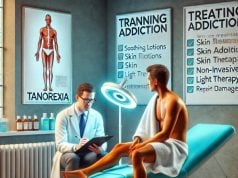Binge Drinking Disorder arises when episodic heavy drinking—defined as consuming five or more standard drinks for men, or four or more for women, in about two hours—becomes a recurring pattern that threatens physical health, mental well-being, and social functioning. More than just a weekend ritual, binge drinking can slip into a disorder marked by compulsive alcohol use, blackouts, and growing tolerance. If you or someone you know struggles to control these episodes despite mounting consequences, recognizing the scope, understanding the underlying drivers, spotting warning signs, and exploring proven treatment and recovery strategies is critical to regaining balance and safety.
Table of Contents
- Insight into Prevalence and Scope
- Origins and Contributing Risk Elements
- Detecting Behaviors, Symptoms, and Assessment
- Consequences on Health and Social Life
- Approaches to Care and Steps Toward Recovery
- Common Questions Answered
Insight into Prevalence and Scope
Binge drinking is widespread across age groups, cultures, and socioeconomic strata, yet often misunderstood as harmless “social drinking.” In the United States, about 25 % of adults report at least one binge episode in the past month; among college students, rates climb above 40 %. European surveys find similar figures, with Northern and Eastern European nations reporting the highest per-capita binge prevalence. In low- and middle-income countries, growing alcohol availability and shifting cultural norms are fueling rising rates, particularly among young adults.
While many engage in occasional bingeing without long-term harm, the pattern can evolve into a disorder when:
- Episodes occur repeatedly (weekly or more).
- Control over consumption weakens despite negative outcomes.
- Physical tolerance and withdrawal symptoms develop.
Globally, binge drinking accounts for over 20 % of the 3 million annual alcohol-related deaths, including accidents, violence, and medical complications. Recognizing that episodic heavy drinking can escalate into a clinical disorder underscores the need for public-health measures, early screening in primary care, and accessible interventions.
Origins and Contributing Risk Elements
Why do some people binge drink occasionally and others spiral into a disorder? Multiple layers interact:
Biological factors
- Genetic predisposition: Family history of alcohol use disorders doubles to triples one’s risk, reflecting inherited differences in alcohol metabolism and reward sensitivity.
- Neurochemical response: Bingeing floods the brain with dopamine, reinforcing heavy-drinking episodes; over time, baseline reward function diminishes, prompting more frequent binges.
Psychological drivers
- Coping mechanism: Stress, anxiety, or depression lead individuals to use alcohol for temporary relief; binge episodes intensify this reinforcement cycle.
- Personality traits: High impulsivity, sensation seeking, and low distress tolerance correlate strongly with binge patterns.
- Cognitive distortions: Beliefs like “I deserve to let loose” or “I can handle my alcohol” perpetuate risky drinking behaviors.
Social and environmental influences
- Peer norms: College campuses, workplace happy hours, and social gatherings often normalize rapid heavy consumption.
- Cultural messaging: Advertising and media glamorize bingeing as fun, making moderation seem dull.
- Accessibility: Low cost, high-alcohol beverages (alcopops, shots) facilitate rapid intoxication.
- Life transitions: Major events—starting college, job changes, divorce—can trigger increased binge episodes as coping.
Intersection of factors
When genetic vulnerability meets high-stress environments and permissive social circles, individuals face dramatically increased risk. Prevention programs that teach stress management, correct misperceptions about peer drinking norms, and promote healthy alternatives can interrupt this trajectory.
Detecting Behaviors, Symptoms, and Assessment
Spotting Binge Drinking Disorder early hinges on recognizing specific patterns and using validated screening tools.
Behavioral warning signs
- Drinking rapidly to achieve intoxication (“pre-gaming”).
- Skipping meals to save stomach capacity for alcohol.
- Engaging in risky behaviors—driving, unprotected sex—while intoxicated.
- Recurring blackouts or memory lapses after episodes.
Physical and psychological symptoms
| Symptom | Observation | Underlying cause |
|---|---|---|
| Hangovers and nausea | Morning after episodes | Dehydration, acetaldehyde buildup |
| Slurred speech, coordination issues | Intoxication level high | CNS depressant effects |
| Mood swings | Euphoria then depression | Rapid neurochemical shifts |
| Sleep disruption | Insomnia despite exhaustion | Alcohol’s impact on sleep architecture |
Diagnostic criteria
While not in DSM-5 as a standalone, Binge Drinking Disorder maps onto Alcohol Use Disorder criteria: repeated unsuccessful attempts to cut down, craving, tolerance, and withdrawal signs. Screening instruments include:
- AUDIT-C: The three-item Consumption subset of the AUDIT, with scores ≥ 4 in men or ≥ 3 in women indicating concern.
- Single binge-frequency question: Number of days in past month with ≥ 5/4 drinks for men/women.
A comprehensive evaluation also assesses co-occurring mental-health issues, family history, and functional impairments in work, school, or relationships.
Consequences on Health and Social Life
Bingeing isn’t just unpleasant mornings; it carries acute and chronic risks.
Acute dangers
- Accidents and injuries: Falls, drownings, vehicle crashes account for a large share of alcohol-related emergency visits.
- Alcohol poisoning: Blood-alcohol levels can climb dangerously high, suppressing respiration and consciousness.
- Violence: Intoxication heightens aggression, increasing assault and self-harm risk.
Long-term health effects
- Cardiovascular strain: Repeated heavy episodes can cause arrhythmias (“holiday heart” syndrome) and hypertension.
- Liver damage: From fatty liver to alcoholic hepatitis, surges in acetaldehyde stress hepatocytes.
- Neurological impact: Memory impairment, cognitive decline, and increased dementia risk with chronic heavy use.
Psychosocial fallout
- Academic and occupational decline: Missed deadlines, poor performance, absenteeism.
- Relationship strain: Unpredictable behavior, broken promises, and financial stress erode trust.
- Mental-health disorders: Higher rates of depression, anxiety disorders, and PTSD in bingeing populations.
The ripple effects of Binge Drinking Disorder extend to families, workplaces, and communities—underscoring the need for targeted interventions and support networks.
Approaches to Care and Steps Toward Recovery
Overcoming Binge Drinking Disorder often involves staged interventions:
Stage 1: Brief interventions and motivational tools
- Motivational interviewing: Facilitates internal motivation by exploring ambivalence and highlighting personal goals.
- Brief advice: Primary-care or emergency clinicians deliver targeted messages about binge risks and resources.
Stage 2: Psychosocial treatments
- Cognitive-Behavioral Therapy (CBT): Teaches strategies to identify triggers, restructure thoughts (“I need a drink to relax”), and develop coping skills (relaxation, problem-solving).
- Goal setting and self-monitoring: Drinking diaries or apps help individuals track episodes, triggers, and progress.
- Contingency management: Incentives—vouchers, privileges—reinforce days without binge episodes.
Stage 3: Peer support and mutual-help groups
- SMART Recovery: Offers science-based tools for self-management of addictive behaviors.
- Alcoholics Anonymous (AA): Fellowship and 12-step program for those whose binge patterns meet AUD criteria.
Stage 4: Medication-assisted strategies
- Naltrexone: Reduces reward response to alcohol, lowering binge frequency and intensity.
- Acamprosate: Stabilizes glutamate and GABA systems to ease post-binge brain hyperactivity.
- Disulfiram: Creates an aversive reaction if alcohol is consumed—used selectively in motivated individuals.
Stage 5: Relapse prevention and lifestyle shift
- Trigger mapping: Journaling emotions, social contexts, and cues that lead to binge episodes.
- Alternative reinforcers: Exercise, creative hobbies, or volunteering to fulfill dopamine needs healthily.
- Support network: Regular check-ins with therapists, peers, or sponsors to sustain accountability.
Practical tips: always eat before drinking; alternate alcoholic with non-alcoholic beverages; plan social outings that don’t center on drinking; establish a buddy system for early intervention when urges arise.
Common Questions Answered
How is binge drinking different from alcoholism?
Bingeing refers to heavy episodic drinking without necessarily meeting full Alcohol Use Disorder criteria. When these episodes recur and impair life, they cross into disorder territory akin to AUD.
Can occasional bingeing be safe?
Infrequent binges (once or twice a year) among healthy adults pose lower risk. Regular heavy episodes (weekly or more) significantly increase acute and chronic health dangers.
Which medications help curb binge episodes?
Naltrexone and acamprosate have the strongest evidence for reducing heavy-drinking days and cravings. Disulfiram may deter drinking through aversive conditioning.
How can I monitor my binge triggers?
Use a drinking diary or smartphone app to log emotions, social situations, and physical cues preceding each episode. Pattern recognition guides targeted coping strategies.
When should I seek professional help?
If you experience loss of control over episodes, blackouts, legal or health consequences, or distress about your drinking, consult a healthcare or addiction specialist.
Disclaimer
This content is for educational purposes and does not replace professional medical advice, diagnosis, or treatment. Always consult a qualified healthcare provider for personalized guidance on alcohol use and related concerns.
If you found this guide helpful, please share it on Facebook, X (formerly Twitter), or your favorite platform—and follow us for more expert-backed health insights. Your support enables us to continue creating valuable resources!











